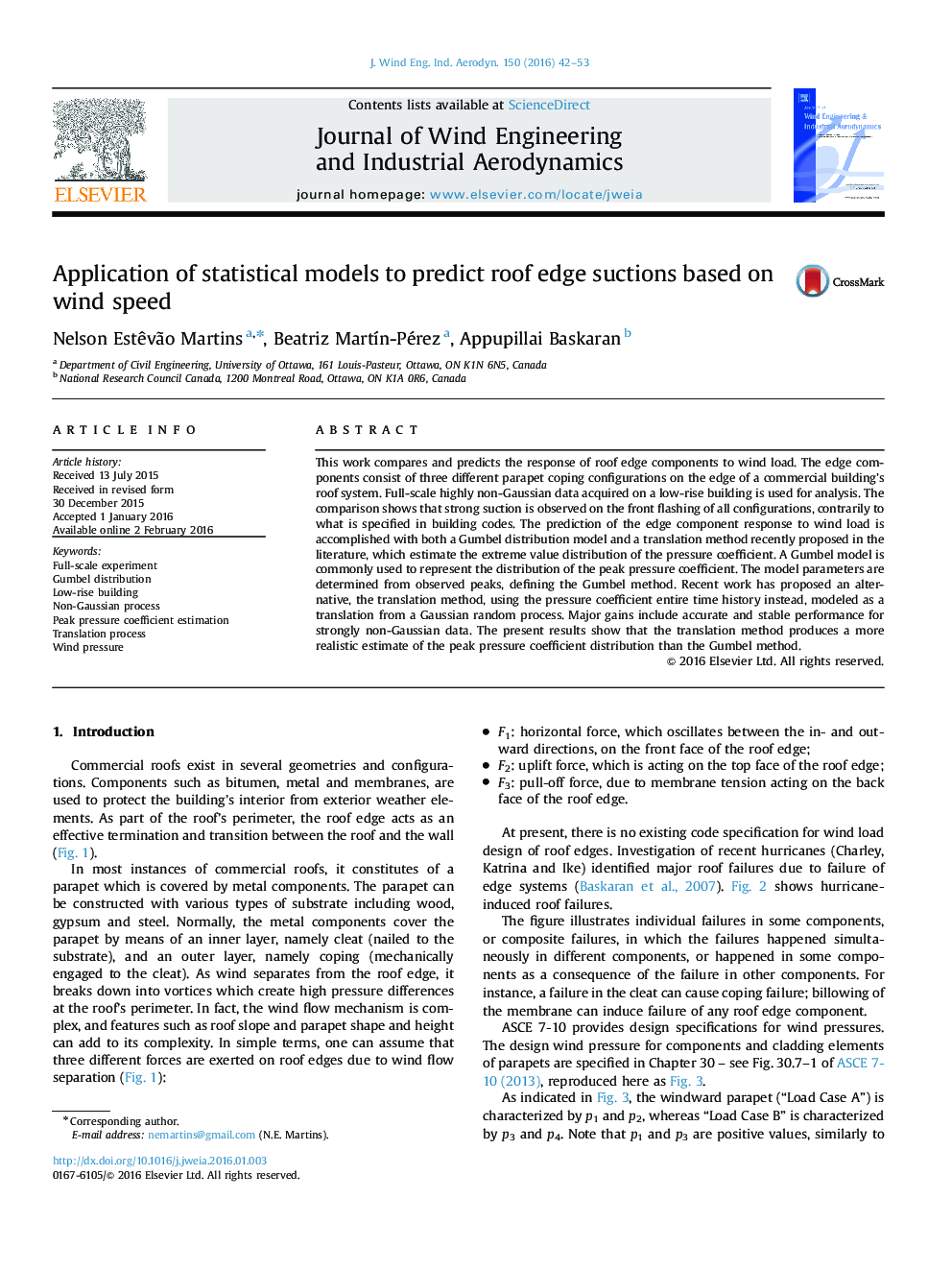| Article ID | Journal | Published Year | Pages | File Type |
|---|---|---|---|---|
| 292849 | Journal of Wind Engineering and Industrial Aerodynamics | 2016 | 12 Pages |
•Full-scale study of wind loads on roof edge flashings for low-rise building parapets.•Suction observed on the front and top flashings, contrarily to code provisions.•The performance of three different edge configurations is similar.•Extreme value analysis used to compute design pressure coefficients and suction.•Gumbel distribution and a translation from a Gaussian process are compared.
This work compares and predicts the response of roof edge components to wind load. The edge components consist of three different parapet coping configurations on the edge of a commercial building’s roof system. Full-scale highly non-Gaussian data acquired on a low-rise building is used for analysis. The comparison shows that strong suction is observed on the front flashing of all configurations, contrarily to what is specified in building codes. The prediction of the edge component response to wind load is accomplished with both a Gumbel distribution model and a translation method recently proposed in the literature, which estimate the extreme value distribution of the pressure coefficient. A Gumbel model is commonly used to represent the distribution of the peak pressure coefficient. The model parameters are determined from observed peaks, defining the Gumbel method. Recent work has proposed an alternative, the translation method, using the pressure coefficient entire time history instead, modeled as a translation from a Gaussian random process. Major gains include accurate and stable performance for strongly non-Gaussian data. The present results show that the translation method produces a more realistic estimate of the peak pressure coefficient distribution than the Gumbel method.
